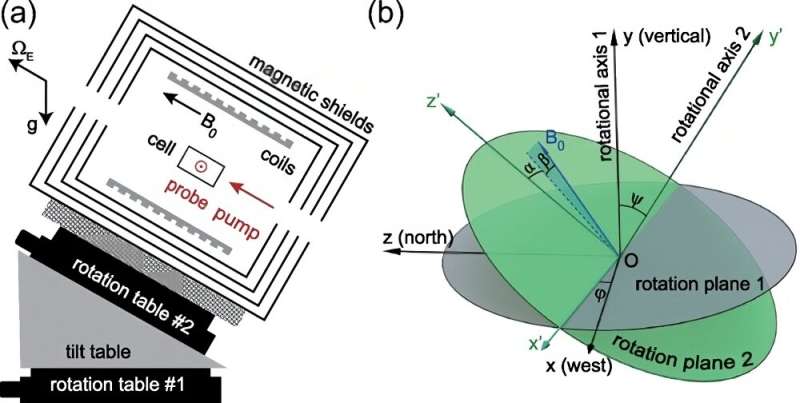This article has been reviewed according to Science X's editorial process and policies. Editors have highlighted the following attributes while ensuring the content's credibility:
fact-checked
peer-reviewed publication
proofread
Exploring gravity's effect on quantum spins

A joint research group led by Prof. Sheng Dong and Prof. Lu Zhengtian from the University of Science and Technology of China (USTC) of the Chinese Academy of Sciences (CAS), investigated the coupling effect between neutron spin and gravitational force via employing a high-precision xenon isotope magnetometer. This work was published in Physical Review Letters.
This research aims to uncover the coupling strength between neutron spin and gravity by measuring the weight difference between the neutron's spin-up and spin-down states. The experimental results revealed that the weight difference between these two states was less than two sextillionths (<2×10-21), setting a new upper limit on the coupling strength of this effect.
An article titled "Testing Gravity's Effect on Quantum Spins," reported in Physics, highlights this precise measurement research as a novel exploration of the intersection of quantum theory and gravity.
There are four fundamental physical interactions in nature, among which only gravity has not been experimentally found to be related to a particle's intrinsic spin. If the spin is coupled with gravity, particles in different spin states will exhibit extremely small differences in energy and force within the Earth's gravitational field.
Since the 1970s, researchers have been developing various classical or quantum measurement methods to search for the coupling phenomenon between spin and gravity, continuously improving the precision of measurement. These experiments have also investigated the fundamental spacetime symmetry in gravitational interactions and seek to identify axion-like particles that mediate monopole-dipole interactions.
The USTC team developed a highly stable and sensitive 129Xe-131Xe-Rb co-magnetometer, combining their self-developed atomic devices and spectroscopic measurement techniques, precision measurement methods developed to suppress systematic errors in co-magnetometer systems.
The co-magnetometer is used as a quantum compass, measuring the coherent effects between the two quantum spin states pointing upward and downward. The quantum axis of the system aligns with the Earth's rotation axis (i.e., the direction of the North Star) with a precision better than 0.6 degrees, significantly reducing systematic experimental errors caused by the rotation of the Earth.
The experimental results compress the upper limit of the neutron's spin-gravity coupling strength by a factor of 17, and improve the precision of various fundamental physical effects by an order of magnitude.
More information: S.-B. Zhang et al, Search for Spin-Dependent Gravitational Interactions at Earth Range, Physical Review Letters (2023). DOI: 10.1103/PhysRevLett.130.201401
Journal information: Physical Review Letters
Provided by University of Science and Technology of China



















